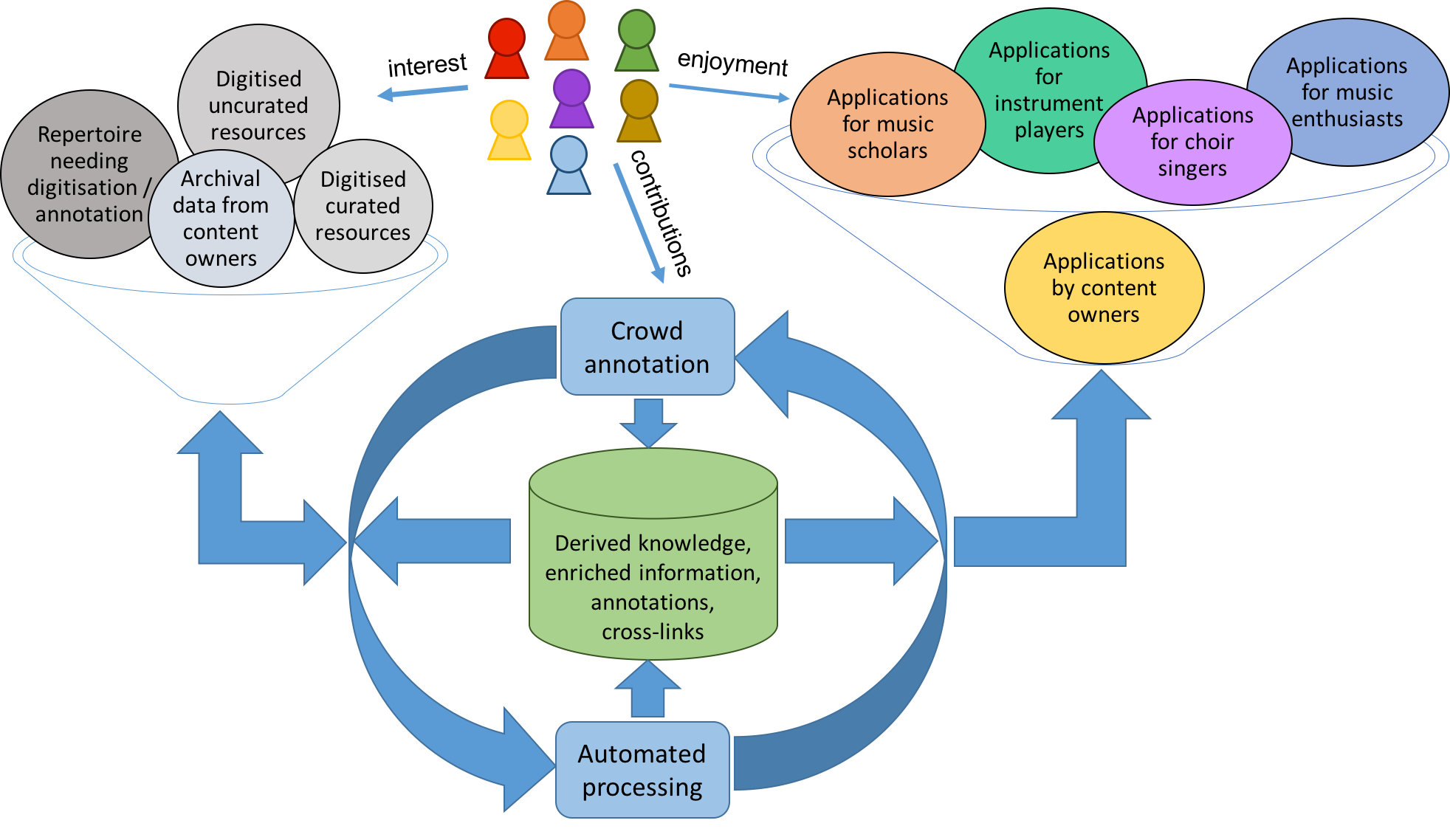For a more extended, official project abstract, see here.
Classical music is one of the greatest treasures of Europe’s cultural heritage, which still is actively performed by many people today. Much of the classical repertoire is in the public domain by now, and massive amounts of scores and recordings have been digitized and become available to the general public.
Does this mean we extensively engage with this repertoire? Well, this still could be better.
Generally, the content that is available now only will be found by specialists, who already know what they are searching for. Outsiders to the genre will not easily have access. Even if they would, a score or recording alone may not be enough; further contextualisation and enrichment would be needed to make the music truly accessible.
But how to realise this? Traditionally, this required a lot of (specialist) expert manual labour, hand-curating proper related material to musical pieces, and potentially reformatting them in more usable digital formats.
However, since many people have interest in music, and quite a few people actually can read and play classical music, maybe we can include them in this process, and have them help out with making sense of the digital public-domain music data we presently have available.
In addition, in the Music Information Retrieval domain, various technological solutions were already proposed to automatically analyse digital music content. These solutions can help us in scaling up the analysis, although they won't be perfect. Here again, human perspectives can be beneficial.
TROMPA is a research project, sponsored by the European Union, in which we will investigate these aspects. While involving several key user audiences and use cases, we will massively enrich and democratise our publicly available musical heritage, creating much more interaction between state-of-the-art technology and music-loving citizens (including the large scene of amateur performers).
Normally, when creating an enriched music application, this is what the traditional value chain would look like:

In this traditional value chain, all efforts are directed towards the single application, but beyond that application, it is not trivial to reuse knowledge and components.
In TROMPA, we will work on establishing a new value chain, in which user involvement and reusable components play a major role:

TROMPA project has received funding from the European Union's Horizon 2020 research and innovation programme under grant agreement No 770376.

